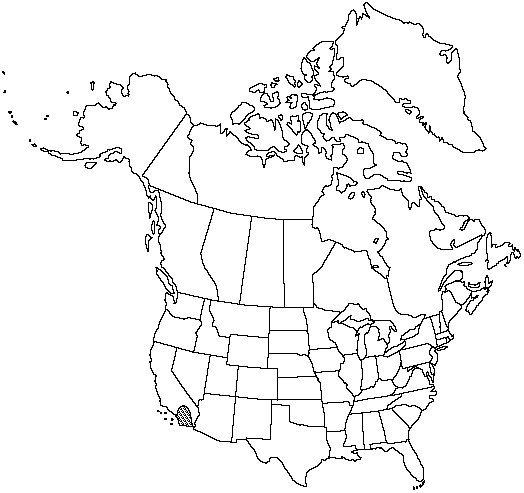Asplenium vespertinum
Bull. Torrey Bot. Club 27: 197. 1900.
Roots not proliferous. Stems short-creeping, rarely branched; scales black with lighter margins, linear-lanceolate, 2–3 × 0.2–0.4 mm, margins entire, or denticulate distally. Leaves monomorphic. Petiole reddish brown or purplish black throughout, lustrous, 2–5 cm, 1/4–1/6 length of blade, sometimes curved like a J at base; indument of blackish brown, filiform scales at base. Blade linear, 1-pinnate throughout, 5–15(–28) × 1–2.5 cm, thick, glabrous; base gradually tapered; apex acute, not rooting. Rachis reddish brown or purplish black throughout, shiny, glabrous. Pinnae 15–30 pairs, oblong; medial pinnae 5–10 × 2–3 mm; base rounded to cuneate; margins lobed or serrate; apex obtuse. Veins free, obscure. Sori 2–6 pairs per pinna, on both basiscopic and acroscopic sides. Spores 64 per sporangium.
Habitat: Moist, shaded canyon walls and at base of overhanging rocks
Elevation: 0–1000 m
Distribution

Calif., Mexico in Baja California.
Discussion
Selected References
None.